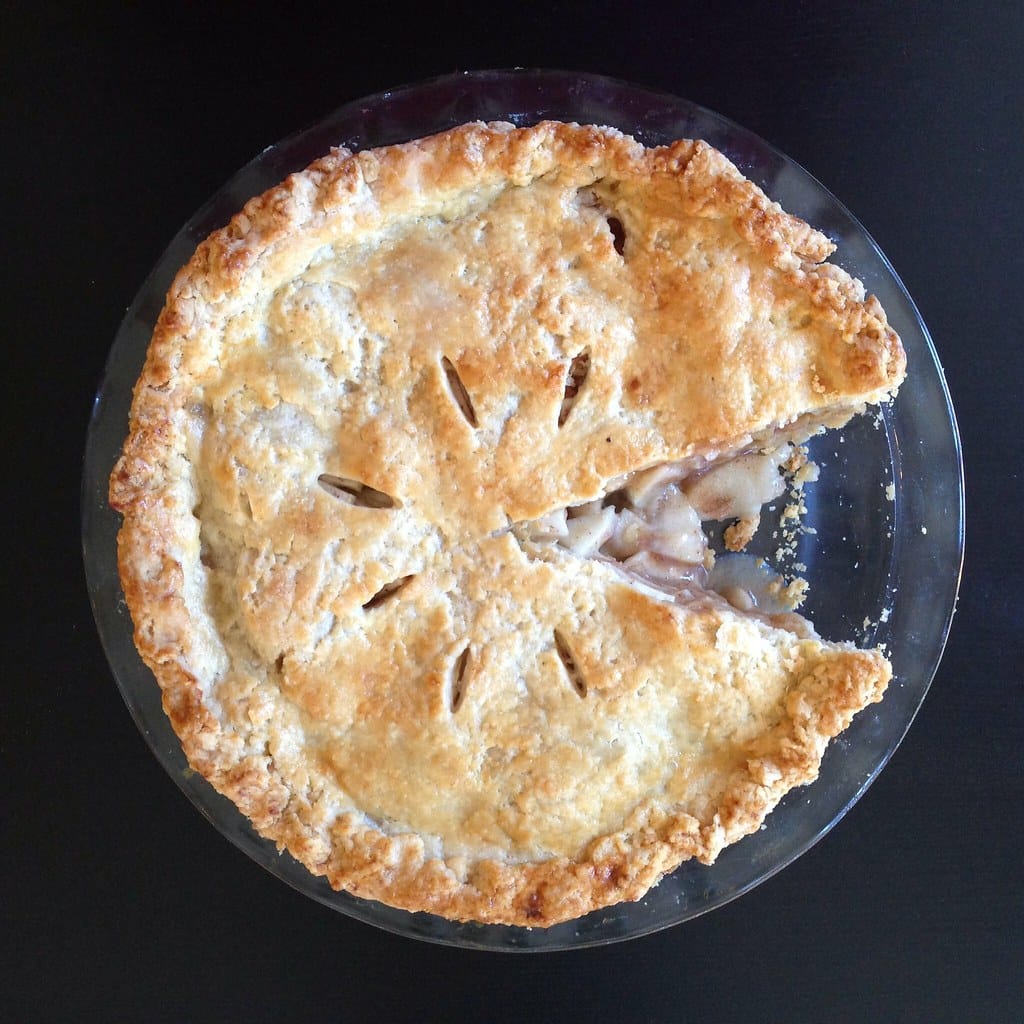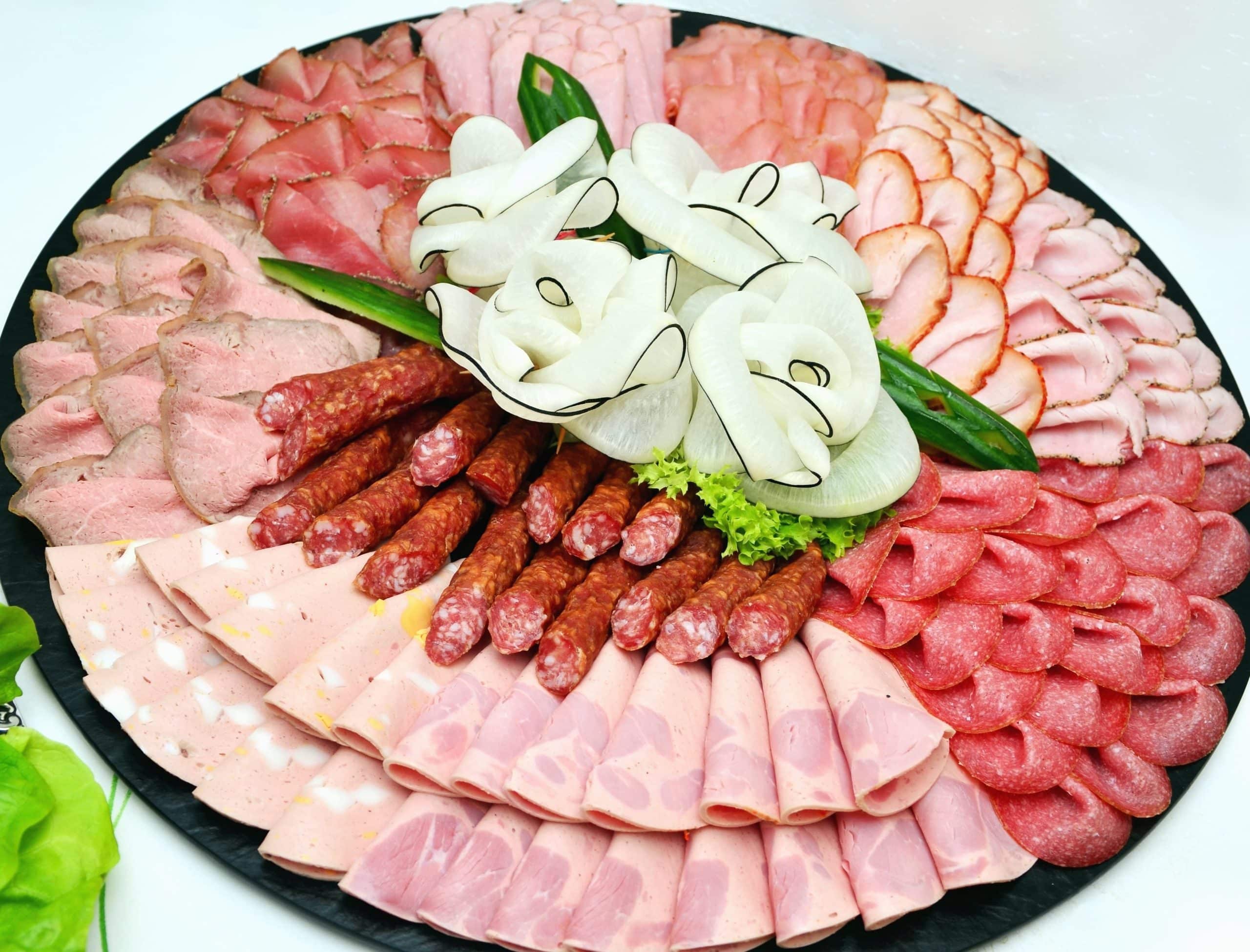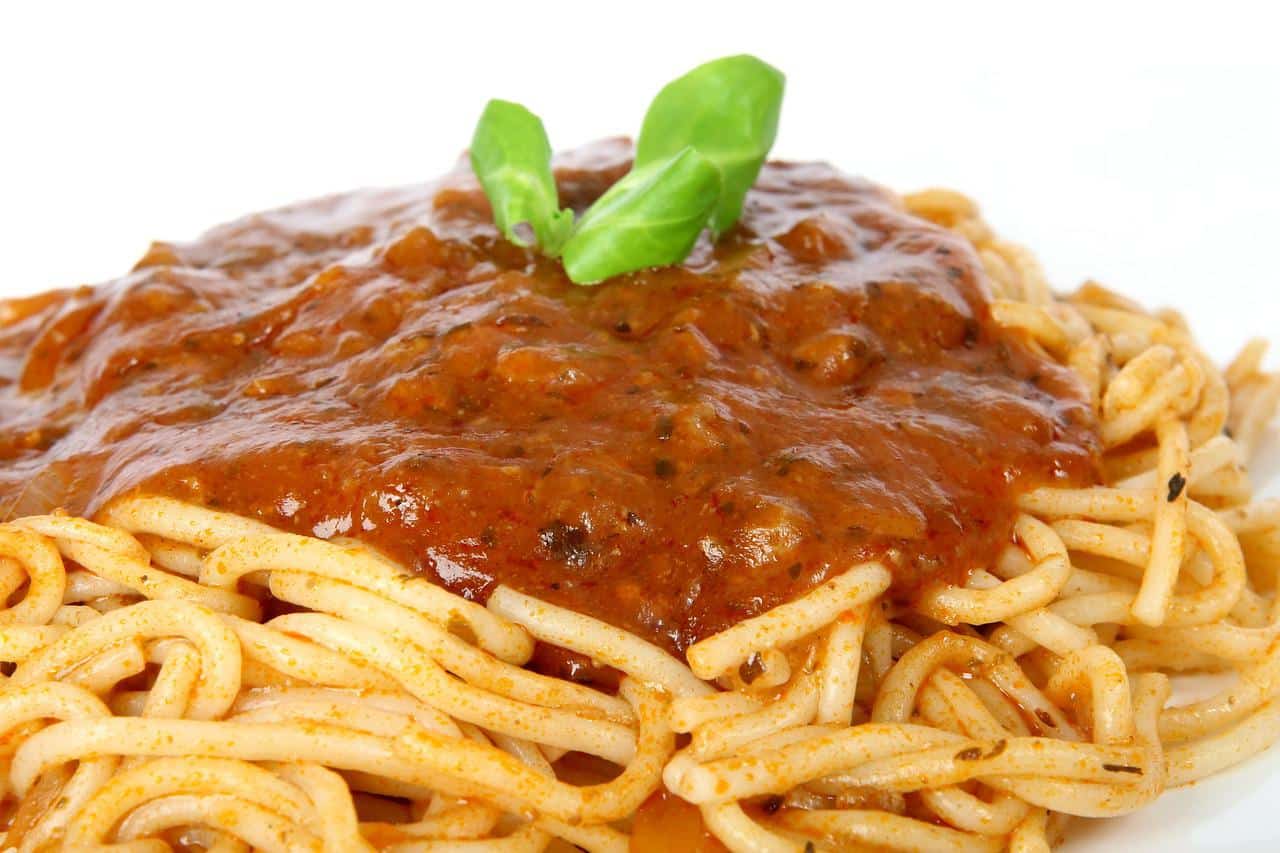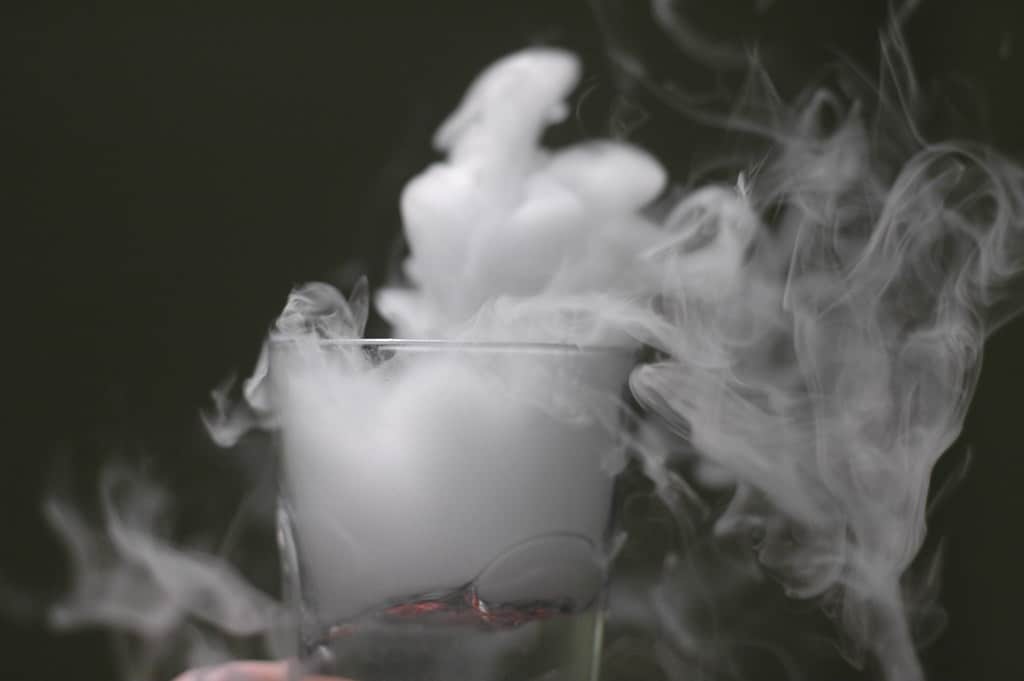Salmon skin adds a thrilling taste and an entirely unique chewy texture to any dish.
It also prevents salmon meat or flesh from drying out.
In this regard, high chances are that you have left it on each time you sear, grill, or saute your fish.
So, can you eat salmon skin?
You can eat salmon skin; however, consuming them from high-quality sources is advisable.
Fish easily accumulates impurities like polychlorinated biphenyls in water and air.
Therefore, poorly bred salmon could contain high amounts of pollutants in their skin.
This article answers the question, ‘can you eat the skin on salmon?’ by stating the nutritional benefits of salmon skin.
It also describes preparing this delicacy and the possible dangers of consuming salmon skins.
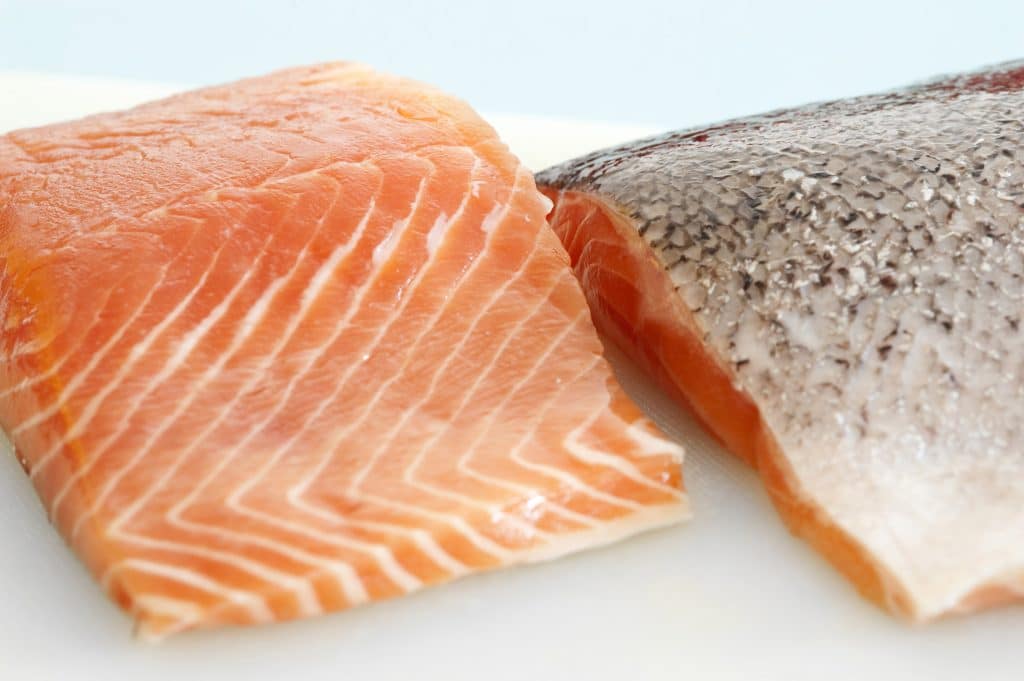
Health benefits of salmon skin
Salmon live in cold water and thus naturally have a high concentration of omega-3 fatty acids to maintain their body temperatures.
These natural and healthy fats have several health benefits, which include:
Maintaining a healthy heart
Omega 3 fatty acids promote healthy blood pressure reducing the strain on your heart.
They also lower triglyceride levels and thus prevent arteries’ thickening and hardening, which may cause heart attacks or coronary heart disease.
Additionally, these fatty acids reduce inflammatory markers, which are heart failure’s leading causes.
Improving brain health
Sixty percent of the brain is made up of various fatty acids.
That said, human bodies don’t naturally produce these fats; you should acquire them through diet.
Omega 3 is essential for normal brain functioning as it prevents brain degeneration, brain fog, depression, and brain diseases.
These fats also reduce the risk of suffering memory loss and help improve mood.
Promotes eye health
There are three types of omega threes in salmon skin; eicosapentaenoic acid (EPA), alpha-linolenic acid (ALA), and docosahexaenoic acid (DHA).
The ALA and DHA fatty acids are vital for eye health as they prevent the development of macular degeneration, which is the leading cause of vision loss among many Americans.
Omega-3 fatty acids also curb the formation of dry eye syndrome and reduce eye pressure which can escalate to Glaucoma.
Increases energy
Healthy fats are a reliable source of energy.
That said, omega-3 fatty acids are stored right beneath the salmon’s skin.
Thus, the skin comes off with lots of fats while peeling, making it rich.
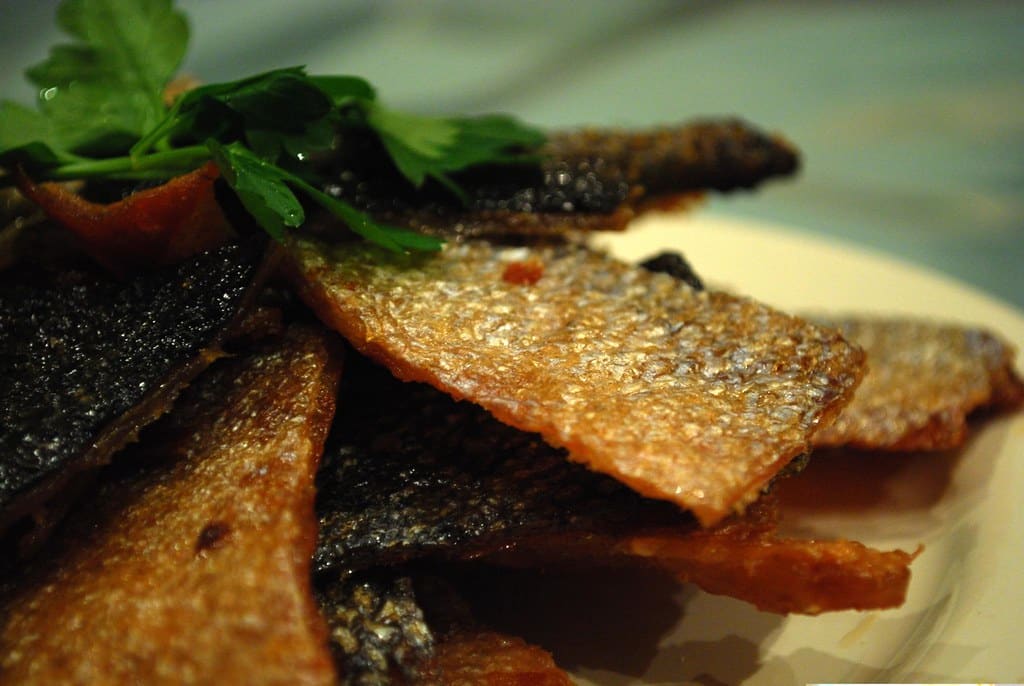
Dangers and side effects of ingesting salmon skin
Although salmon skin has lots of nutritional benefits, its consumption could also cause some adverse side effects, which may include:
Salmon poisoning
Salmon skin can be infected by pollutants and impurities like polychlorinated biphenyls and mercury.
These impurities can then cause you to suffer from poisoning after ingesting them.
Signs of salmon poisoning include abdominal pain, diarrhea, fever, and vomiting.
Parasite invasion
Salmon skin may contain bacteria, viruses, and parasites like flukes and tapeworms.
In this regard, you can easily introduce them to your body by ingesting salmon skin.
Parasitic infection can be critical; seek medical attention immediately if you experience the following symptoms.
- Abdominal pain
- Diarrhea
- Vomiting
Allergic reactions
People with fish allergies may suffer allergy flare-ups after ingesting salmon skin.
Symptoms of allergic reactions include swelling, hives, itching, and difficulty breathing, which can be fatal.
Therefore, contact the doctor immediately if you suffer any symptoms following salmon skin consumption.
Blood-thinning
Lots of omega-3 fatty acids have blood-thinning effects.
Therefore, they are unsafe for people with bleeding disorders or taking medications that cause blood thinning.
This is because it could increase their risk of injury.
Cooking salmon skin
You could prepare this delicacy by cooking your salmon with the skin on it or making them a healthier bacon alternative.
These two methods are described below.
Cooking salmon with skin on
Preparing salmon with the skin on prevents it from drying out and helps the flesh maintain all nutrients that would otherwise be lost when exposed.
While cooking salmon in this manner, it’s important to use a gentle or lenient cooking mode like baking, steaming, or poaching.
This is necessary to prevent the skin from drying out.
Season the salmon with salt and pepper to enhance the taste.
You should also cook it skin side down to avoid sticking and flip it halfway through to allow both sides to cook.
Salmon bacon
Although it doesn’t look as appetizing as the pork variety, salmon skin bacon is tastier and easier to make.
Preparing it involves:
- Remove the skin off the salmon
- Slice skin into long, thin pieces
- Toss strips in brine for fifteen minutes
- Pat with paper to get rid of excess fluid
- Season salmon skin strips with pepper
- Add cooking oil in a wok till ¾’’ high
- Add salmon strips when the oil gets hot
- Cook for fifteen minutes, stirring frequently
- Serve with a dipping sauce of your choice
How to remove the salmon skin
Below are some steps for removing salmon skin from the flesh.
- Place the salmon on a chopping board(skin side down)
- Sprinkle some salt towards the tail to have a better grip on it
- Hold the salted end and start cutting between the skin and flesh towards the other end
- Cut along the whole length of the fillet and avoid cutting through the skin. Be careful to hurt your fingers.
- Save the salmon flesh fo later use.
How to get crispy salmon skin
There’s nothing better than snacking on some crispy and delicious salmon skin strips with a dipping sauce.
That said, below is a recipe for preparing this snack.
- Clean the salmon skin
- Pat it dry as it won’t get crispy when cooked while still moist
- Season generously with salt
- Heat up your skillet over medium heat. Use a pan that’s large enough to avoid crowding.
- Add oil to cover the pan’s bottom. Avocado oil is preferable as it doesn’t change the salmon’s taste.
- Place the salmon on the skillet skin side down.
- Let the salmon cook undisturbed until golden brown for three to four minutes.
- Flip the salmon skin to allow it to cook on both sides and let it cook for three minutes
- Remove from skittle and serve with your favorite dipping sauce.
How to remove scales from salmon skin
Although some people don’t mind the scales on salmon skin, it can be uncomfortable for others.
That said, in case you can’t stand scales, here is a simple and detailed description of how to remove them from your salmon skin.
- Rinse the salmon with cool running water as it eases the scaling process
- Place the salmon on a chopping board
- Use a sharp knife or fish scaler to scrape off the scales. Ensure you go in the same direction to avoid tearing the salmon skin.
- Flip the salmon and repeat the same procedure
- Rinse the fish to remove the remaining scales
- Pat the salmon dry before storing or cooking
What to do with leftover salmon skin?
Don’t throw away your leftover salmon skins, as there are several ways of reusing them.
They include:
- Make salmon skin chips – Cut the skin into thin strips, then fry them in oil until brittle or crispy.
- Toss them in a broth – simmer or boil the salmon skin in water until it breaks up, then add seasonings and vegetables to make it tastier.
- Use it to make a healthy dog treat – Bake the salmon skin in the oven until it’s brittle and crispy. Break it into tiny pieces before feeding it to your dog to avoid choking.
Difference between wild salmon and farm-raised salmon
Wild salmons are lower in calories than their farm-raised counterparts.
However, they have higher amounts of omega-3 fatty acids as they live in colder regions or waters.
These salmons also have a more intense flavor than farm-raised ones.
On the other hand, farm-raised salmons could have higher concentrations of pollutants like mercury than wild salmons.
Additionally, these salmons are cheaper and hence easily accessible.
That said, you should consider your preference and budget when choosing between these two.
For instance, if the quality is your greatest concern, then wild salmon is the best option for you, but if you’re trying to save some coins, farm-raised salmon is more suitable.
What to look for in a good salmon
Bad or rotten salmon skins can cause severe health problems.
In this regard, below are some tips on how to select a high-quality salmon.
- Always choose a dark pink colored salmon. Gray and brown discolorations indicate that the salmon has gone bad.
- Get your salmon from a reputable and identified source like the local fish market. This is important as some salmons contain many contaminants, causing health problems.
What do the different colors on salmon skin signify?
The white parts on salmon skin are known as glands, and they secrete oils that prevent the skin from drying out.
These glands aren’t toxic, but some people prefer removing them.
Secondly, the black parts of salmon skin contain a compound known as melanin.
It gives the salmon skin its unique color and is safe for consumption; it won’t cause any health complications.
Frequently asked questions(FAQs)
Can you eat the scales on salmon?
You can eat salmon scales.
Ingesting them won’t cause any health problems and will add an exciting crunch and flavor to your meal.
Can you eat the bottom of salmon?
The bottom of salmon is safe for consumption.
It’s also rich in Omega-3 fatty acids, which have several health benefits like promoting heart and brain health.
Can you eat fish skin?
You can eat fish skin.
However, ensure that you properly clean it before consumption.
It’s advisable also to select fish skin in the same criteria you use to choose fish.
Can you eat cooked salmon skin?
You can eat cooked salmon skin as it hardly contains any harmful contaminants and is rich in omega-3 fatty acids.
Most of the pollutants in fish skin reduce during cooking making this delicacy safe for consumption.
Conclusion
Salmon skin is safe for consumption and is rich in omega-3, which has many health benefits.
However, ingesting this delicacy also has dangers and side effects.
Thus, get your salmon skin from reputable sources and cook it properly to avoid suffering from risks like parasite invasion.
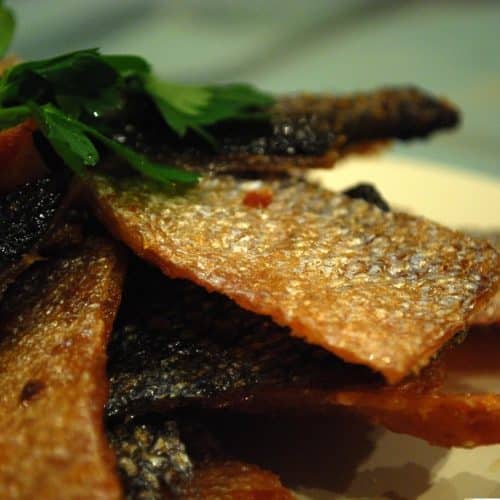
Crispy Salmon Skin
Ingredients
- salmon skin
- salt and pepper
- cooking oil
- dipping sauce
Instructions
- Remove the skin off the salmon
- Slice skin into long, thin pieces
- Toss strips in brine for fifteen minutes
- Pat with paper to get rid of excess fluid
- Season salmon skin strips with pepper
- Add cooking oil in a wok till ¾’’ high
- Add salmon strips when the oil gets hot
- Cook for fifteen minutes, stirring frequently
- Serve with a dipping sauce of your choice
Video
- 25 Easy Greek Side Dishes - July 5, 2025
- 25 Homemade Air Fryer Breakfast - July 5, 2025
- 25 Simple 4th Of July Side Dishes - July 5, 2025
